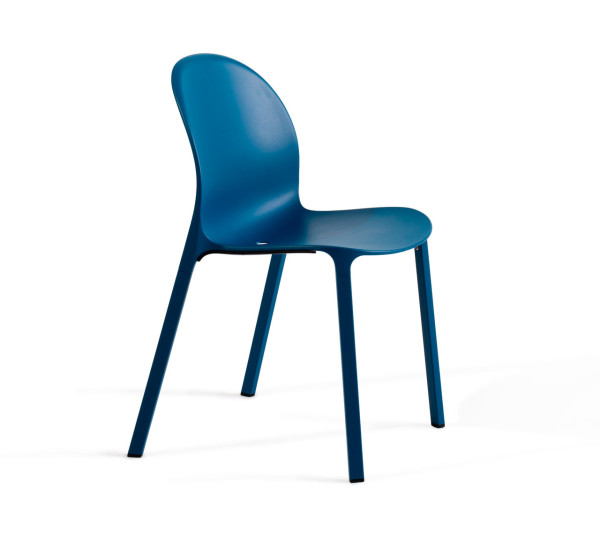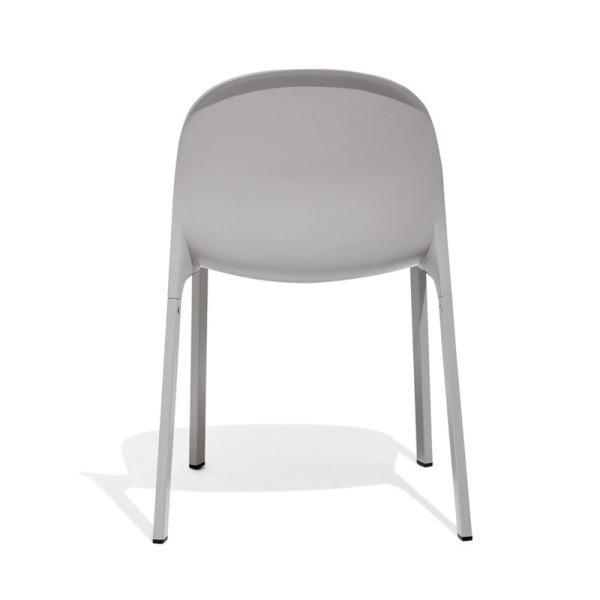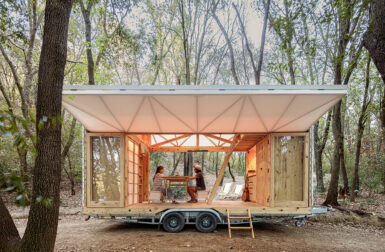Industrial designer and design researcher Jonathan Olivares set out on a mission to design the perfect outdoor chair for Knoll—one that was not too heavy or too light. He also wanted it to be more comfortable than all the others and one that would work indoors as well. With those lofty goals in mind, he completed his mission in the form of the Olivares Aluminum Chair that is not only perfectly weighted, it’s durable, and looks pretty darn amazing.
Working through a series of prototypes, he discovered that the best results came from making the chair from a die-cast aluminum body with a contoured shell and extruded aluminum legs. They used plastic connections so that the chairs can easily be stacked and not scratched in the process. He learned along the way to let the material drive the idea and with that, functionality will follow.
The chair is only three millimeters thick at its thinnest spots and at the widest points it’s nearly three times that. That attention to detail helps keep the edges from being too sharp and lets the aluminum stay cool. The thinner parts of the aluminum actually adjust quickly to your body temperature.
Through a series of manipulations, Olivares was able to get the weight down to under 15 pounds, which is less than the Bertoia chair. All in all, the final design was four years in the making. That’s right, four years!
The chair is available in eight bright colors that are bound to bring a bit of sculptural elegance to your outdoor space (or even the inside!).
You’ll notice a hole in the seat – that’s for the chair to drain. It also allows you to see just how thin the chair is.
Photos courtesy of Knoll.






















